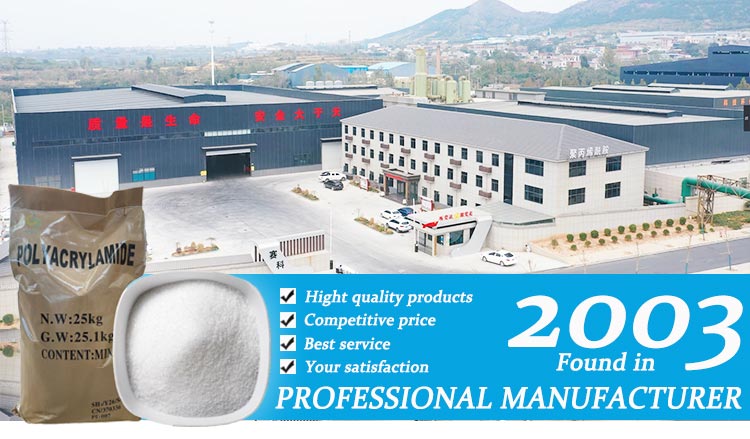Polyacrylamide (PAM)flocculans maximus efficabilis in textilis dyeing wastewater treatment usatur.

Selectione propria typi PAM significa effecta facie et operationis constituit. Below are the key considerations:
I. Criteria Seleccionis
Selection Ionica Typa
Cationic PAM Works via charge neutralization and adsorption bridging.
Anionic PAM (APAM): Effective in neutral or weakly alkaline wastewater, often combined with inorganic coagulants (e.g. PAC) to enhance flocculation.
Non-ionic PAM (NPAM): Used in high-salinity or pH-fluctuating wastewater, relying on molecular chain adsorption (less common).
Molecular Weight (MW) Selection
High MW (>12 million): Ideal for high-turbidity wastewater with suspended solids, promoting rapid settling.
Medium/Low MW (<8 million): Melius est pro materia organica solubile (ex. removo COD), saepe coniunctus cum procesis oxidationis.
Waste Characteristics
pH: CPAM sub acidicis conditionibus optimis facit, dum APAM bene operatur in pH 7–9.
Type dye: Azo dyes (negativo charged) bene responde CPAM; Parabolae dispersionis APAM+PAC combinationes requirent.
II. Treatment Performance
Pollutant Removal Efficiency
Removal COD: 50–70% cum coagulatione combinata; The refractory organics need further biological treatment.
Removing colores: CPAM accipit > 90% removal for reactive dye wastewater.
Suspendit Solidis (SS): Reducit SS < 30 mg/L cum flocculatione optimizata.
Optimizatio
Dosage: Typically 0.5–10 mg/L; Overdosing may cause colloid restabilisation (jar testing recommended).
Dissolution & Mixing: Prepare 0.1–0.5% solution; Vete velocitatem turbationem ut impedere interruptionem catenarum.
Synergistic Effects: Combining with PAC or ferrous sulfate can reduce PAM usage by 30–50%.
III. Common Issues & Solutions
Small Flocs: May indicate low MW or charge mismatch—adjust ionic type or add coagulant aids.
Slow Setting: Check pH (e.g., CPAM works best at pH 4–6).
Residual Monomer Risk: Use high-quality PAM (acrylamide monomer content <0.05%).
IV. Case Study
Planta textilia, quam reaktiva aqua morientibus tractat:
Process: pH adjustment to 5 → PAC (200 mg/L) → CPAM (5 mg/L, 15 miliones MW).
Results: Color reduced from 500×to 20×; COD a 800 mg/L ad 250 mg/L decrevit.
V. Future Trends
Modified PAM: e.g., amphoteric PAM for complex wastewater.
Green Alternatives: Bio-enzymes or natural polymer composites to minimize secondary pollution.
Note: Lab tests (e.g. zeta potential, jar tests) are essential for optimal selection. CPAM etiam potest servire quam sludge dewatering agent.
Si volueritis ad produktos nostros aut habere quaestiones, implete formam inferiorem, quaeso. We will contact you immediately after receiving it. Thank you for your choice.